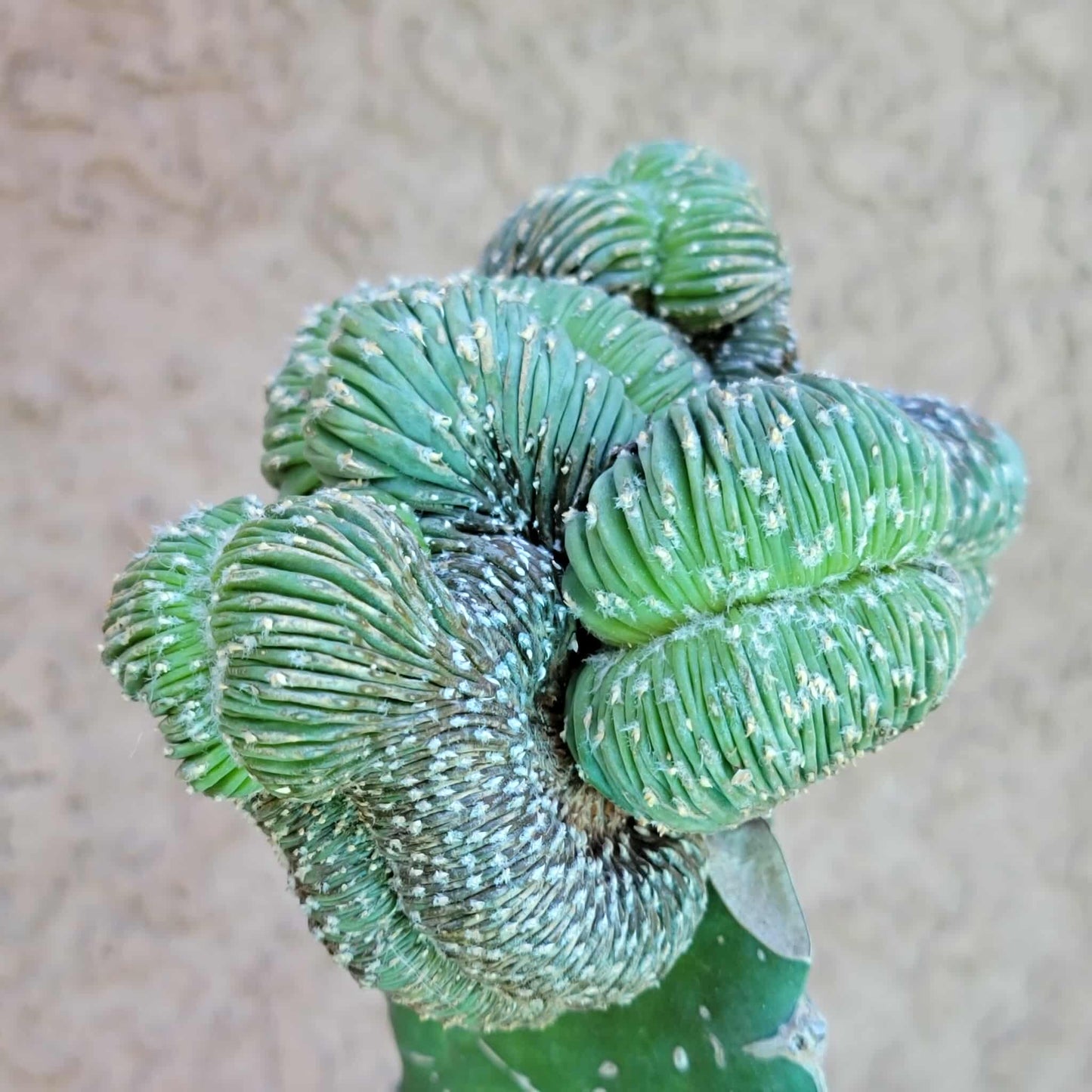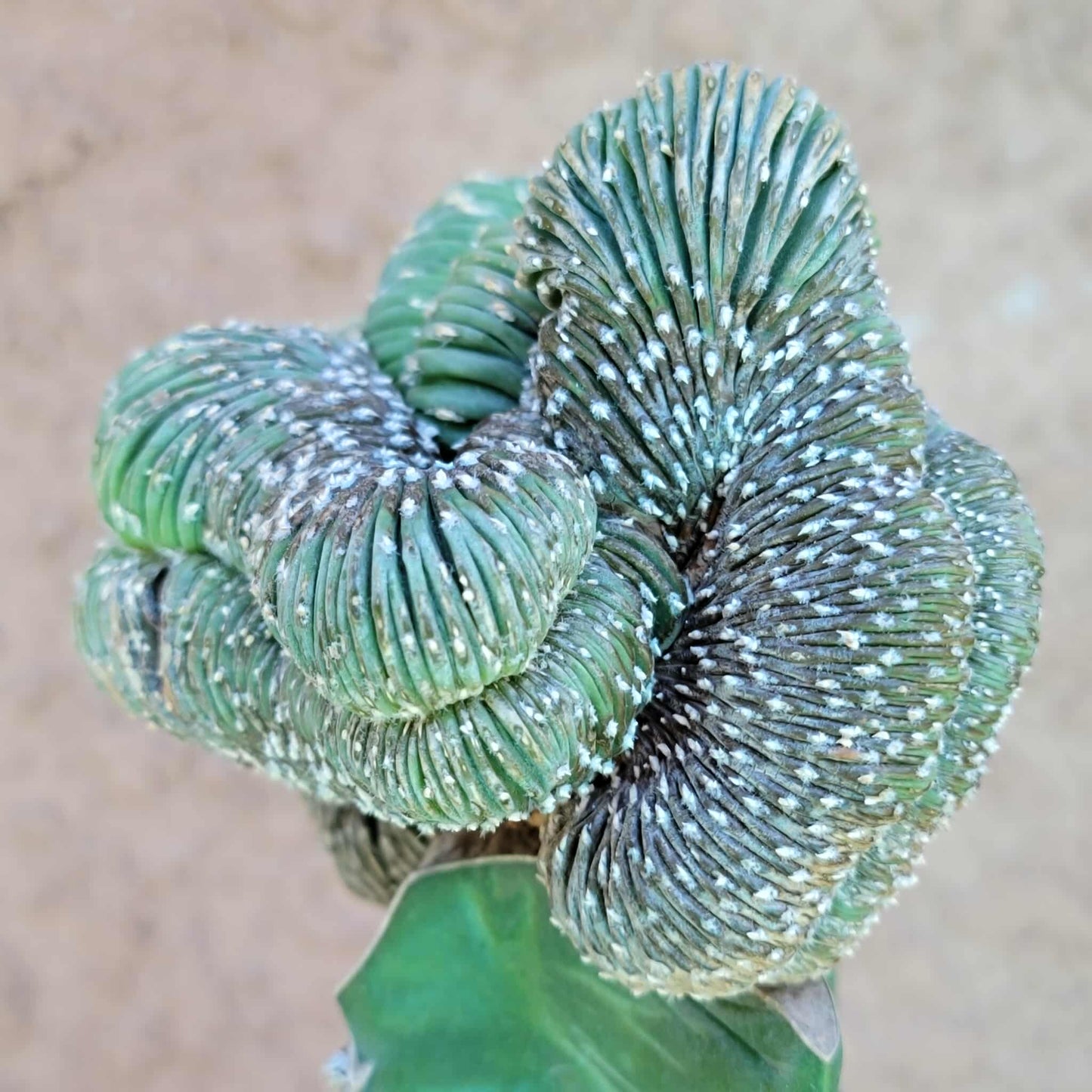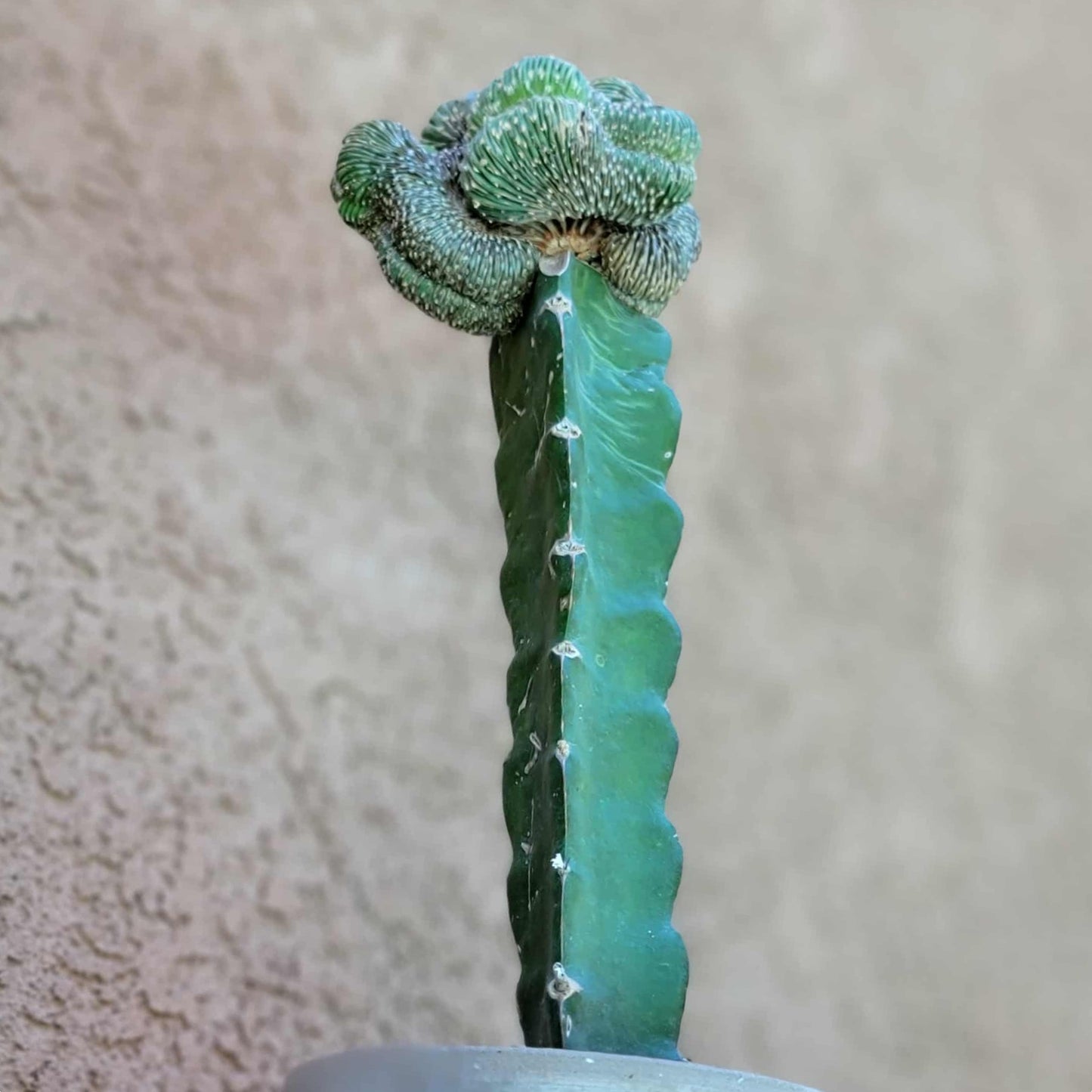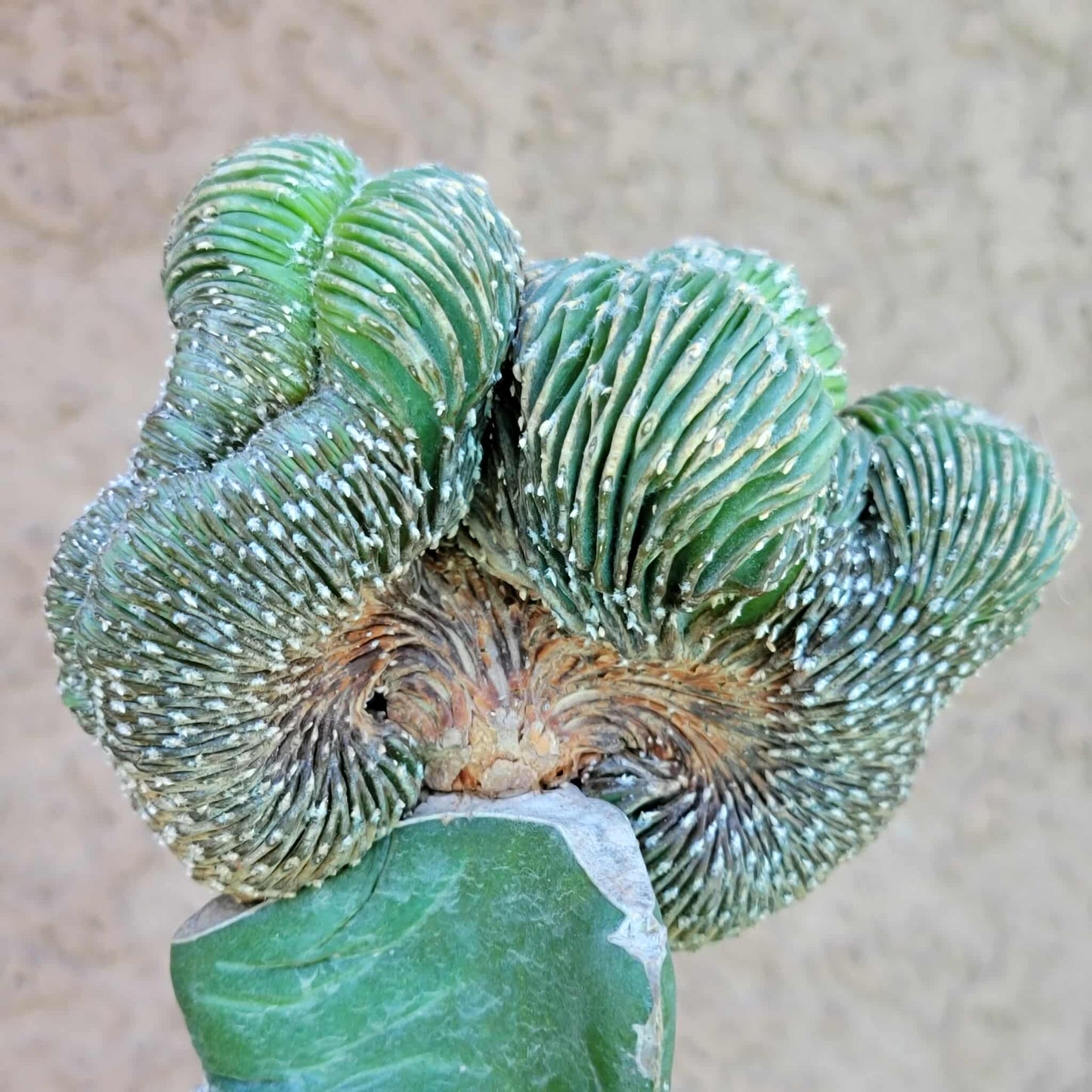Shangri-Ha Cactus Ranch
Geohintonia mexicana f. cristata
Geohintonia mexicana f. cristata
Couldn't load pickup availability
Geohintonia mexicana f. cristata
You will receive this exact, rare, grafted specimen.
Scion measures 3"h x 4"w.
Entire specimen measures 11” tall above the soil line.
Showcased here in cement planter (sold separately).
Roots as shown.
Will be shipped bare root.
The Geohintonia mexicana f. cristata, also known as the Crested Geohintonia mexicana or Crested Geo-Hinton's Cactus, is a unique and sought-after form of the Geohintonia mexicana cactus. This crested form exhibits a fascinating growth pattern, with its stems forming fan-shaped or brain-shaped structures with intricate folds and crevices, instead of the typical spherical shape.
Key characteristics
· Crested growth: The most defining feature is the crested growth, creating unique and varied forms.
· Slow growth: Like the regular Geohintonia mexicana, the crested form is a very slow grower, even slower in its crested form.
· Grafted for faster development: Due to its slow growth, the Geohintonia mexicana f. cristata is often grafted onto other cacti to accelerate its development.
· Bluish-gray body: The stem is typically a distinctive bluish-gray.
· Prominent ribs: It has prominent ribs with small, whitish spines along the edges.
· Magenta flowers: When it flowers, it produces tiny, bright magenta blooms, often tinged with white at the throat. These flowers appear intermittently during spring and autumn.
· Small size: Even mature specimens remain relatively small, making it ideal for collectors and small spaces.
· Rarity: It is considered a rare plant, making it particularly valuable to succulent enthusiasts.
Care and cultivation
· Well-draining soil: Like most cacti, the Geohintonia mexicana f. cristata requires well-draining, mineral-rich soil with minimal organic matter.
· Bright, indirect sunlight: It thrives in strong sun to part sun, benefiting from ample sunlight, especially indoors in a south-facing window. However, too much direct, intense sun can potentially damage the plant.
· Infrequent watering: Water sparingly, allowing the soil to dry out completely between waterings. Overwatering can lead to rot.
· Dry winter rest: During the winter, it's crucial to keep the plant perfectly dry or provide very minimal watering, especially when temperatures fall below 10°C (50°F).
· Good ventilation: Ensure adequate air circulation around the plant.
· Fertilization (during growing seasons): Fertilize monthly with liquid fertilizer during the growing seasons (spring, summer, fall). Use low-nitrogen fertilizer for seedlings and phosphate-potassium fertilizer before and after blooming.
















